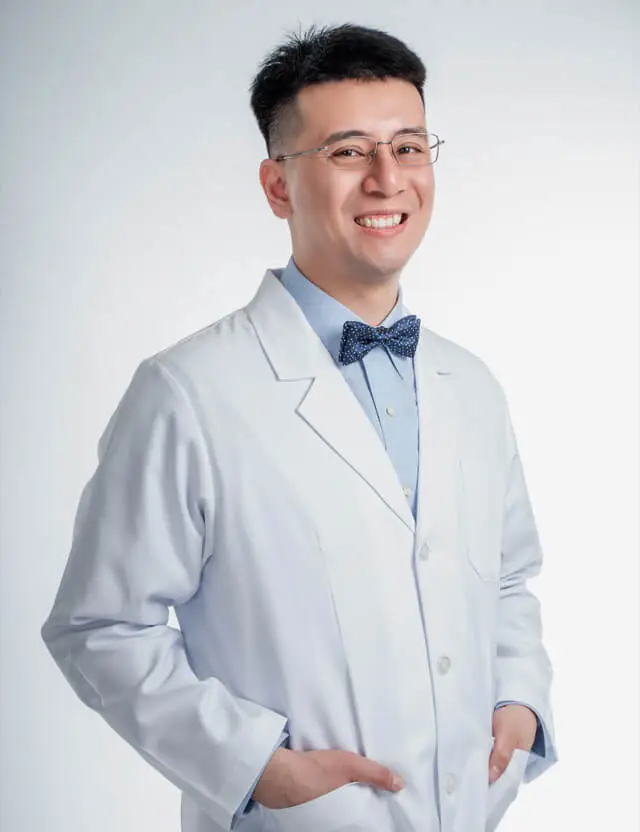Does Quitting Sugar Improve Eyesight? The Benefits Explained
It’s likely that if you’re reading this, you already know all of the negative effects of eating a diet high in sugar. For example, it is believed that consuming too much sugar leads to weight gain, high blood pressure, high cholesterol, and obesity.
Does consuming excessive amounts of sugar impact one’s vision? Better yet, can cutting sugar help with vision improvement? If so, what steps can one take to stop craving sweets?
- Does Quitting Sugar Improve Eyesight
- 8 Benefits of Quitting Sugar For Eyesight
- 1. Reduced risk of developing diabetes
- 2. Lowered risk of cataracts
- 3. Improved blood sugar control
- 4. Reduced risk of macular degeneration
- 5. Better overall nutrition
- 6. Weight management
- 7. Reduced inflammation
- 8. Improved energy levels
- What to Eat Instead
- Alternative Sugar
Does Quitting Sugar Improve Eye Health

It’s important to remember that there are various kinds of sugar. And there are good and bad sources of sugar, just like there are for fats.
High blood sugar can lead to blurred vision and blurry vision due to changes in fluid levels and swelling in the eye tissues. It is true that eating foods high in sugar, such as soda, some snacks, candies, pineapple, etc., can harm your eyes and make your eyes more susceptible to issues. As a result, cutting out those sugar sources will eventually benefit the health of your vision.
If anything, consuming a lot of refined sugars can cause severe vision impairment by lowering immunity and putting a lot of pressure on the eyes. High sugar intake can damage the tiny blood vessels in the eyes, leading to inflammation and an increased risk of developing certain eye conditions, showing how sugar affects eyesight.
8 Benefits of Quitting Sugar For Eyesight

1. Reduced risk of developing diabetes
One of the significant benefits of quitting sugar is reducing the risk of developing diabetes. Diabetes can lead to diabetic retinopathy, where the condition causes the growth of new blood vessels in the eyes, resulting in serious vision problems. Diabetes can have detrimental effects on eyesight, including diabetic retinopathy and diabetic macular edema.
2. Lowered risk of cataracts
Excessive sugar consumption has been linked to an increased risk of developing cataracts. Elevated blood sugar can cause the lens to swell and puts you at a higher risk of developing cataracts. Cutting down on sugar may help reduce the likelihood of developing this condition.
3. Improved control of high blood sugar levels
Lowering sugar intake can lead to better blood sugar levels, positively impacting vision health, especially for individuals with type 2 diabetes or pre-diabetes.
The body releases insulin to regulate blood sugar levels, and insufficient insulin can lead to spikes in blood sugar, which negatively affects vision health.
4. Reduced risk of macular degeneration and diabetic retinopathy
High sugar consumption has been associated with an increased risk of age-related macular degeneration (AMD). High blood sugar levels can also increase the risk of developing AMD. By eliminating or reducing sugar, you may decrease your chances of developing AMD.
5. Better overall nutrition
Cutting sugar often involves making healthier dietary choices, such as consuming more whole foods, fruits, and vegetables. High sugar intake can damage the tiny blood vessels in the retina, leading to bleeding, scarring, and vision loss. These nutrient-rich foods can provide essential vitamins and antioxidants that support overall eye health.
6. Weight management
Excessive sugar intake is closely linked to weight gain and obesity. High blood sugar can lead to conditions like diabetic eye disease and glaucoma.
By quitting sugar, you may maintain a healthier weight, reducing the risk of conditions like diabetic eye disease and glaucoma that are associated with obesity.
7. Reduced inflammation
Consuming high amounts of sugar can contribute to chronic inflammation within the body. High sugar intake can damage the blood vessels in the eyes, leading to inflammation and vision problems.
This chronic inflammation can adversely affect eye health, making it important to reduce sugar to help decrease inflammation levels.
8. Improved energy levels
Quitting sugar can lead to stabilized energy levels by avoiding the energy crashes and fluctuations associated with sugar consumption.
What to Eat Instead

You don’t have to resist your sugar cravings. They arise and persist until they are addressed. Nonetheless, you can try to eat the appropriate sugars when they do occur. The next time a craving hits, grab a handful of fruit instead of a cookie or candy bar.
However, don’t take any old fruit. Select a fruit with a low glycemic index rating. The glycemic index was developed to provide a ranking of the foods that elevate blood sugar. Usually, foods are ranked from 100, where 100 represents the highest blood sugar spike.
Here are some fruits that have low glycemic index scores:
- Apples
- Peaches
- Berries
- Pears
- Grapefruit
- Figs
- Cherries
Alternative Sugar
We can obtain sugar naturally from fruit and vegetables, among other foods, but refined sugars cause issues.
Refined sugars, such as fructose, glucose, and other naturally occurring sugars, are mechanically processed or altered and no longer function in the body. High blood sugar levels can lead to fluid buildup and damage to the optic nerve.
Because they cause a spike in blood sugar and are quickly broken down by the body, these sugars are referred to as simple carbohydrates.
Our bodies are not designed to handle sugar quickly and suffer damage from prolonged or recurrent blood sugar spikes.
Natural sugars, also referred to as complex carbohydrates, are present in fruit (fructose), milk (lactose), and vegetables (glucose).
How eye doctors help with high sugar levels
Keeping your eyes healthy goes beyond a healthy diet and lifestyle — you also need yearly eye exams to detect early signs of eye disease.
Eye doctors, or ophthalmologists and optometrists, play a crucial role in managing the ocular effects of high blood sugar levels, particularly in individuals with diabetes. Here’s how they help:
1. Regular Eye Exams
- Dilated Eye Exams: These exams allow doctors to see the back of the eye (retina) and check for signs of diabetic retinopathy and other diabetes-related eye conditions.
- Frequency: For diabetics, annual eye exams are recommended, although more frequent visits may be necessary if signs of eye damage are present.
2. Early Detection
- Identifying Retinopathy: Eye doctors can detect early signs of diabetic retinopathy, a condition caused by damage to the blood vessels in the retina due to high blood sugar.
- Monitoring Changes: Regular monitoring helps in catching changes early, which can be crucial for preventing progression and preserving vision.
3. Patient Education
- Diabetes Management: Eye doctors educate patients about the importance of controlling blood sugar, blood pressure, and cholesterol levels to protect eye health.
- Lifestyle Advice: Guiding diet, exercise, and smoking cessation to improve overall health and reduce the risk of diabetic complications.
4. Treatment of Diabetic Retinopathy
- Laser Therapy: Photocoagulation can be used to seal leaking blood vessels and prevent the growth of new, abnormal blood vessels in the retina.
- Injections: Anti-VEGF (vascular endothelial growth factor) injections help reduce swelling and inhibit the growth of abnormal blood vessels.
- Surgical Options: Vitrectomy, a surgical procedure to remove blood from the vitreous and scar tissue from the retina, may be necessary in advanced cases.
5. Managing Other Diabetes-Related Eye Conditions
- Diabetic Macular Edema (DME): Treatments include anti-VEGF injections and laser therapy to reduce swelling and preserve vision.
- Cataracts: Eye doctors can perform cataract surgery to replace the clouded lens with an artificial one.
- Glaucoma: Monitoring and managing increased eye pressure to prevent optic nerve damage.
By taking these comprehensive steps, eye doctors help patients with high blood sugar levels manage their eye health, prevent complications, and maintain their vision.
Regular check-ups and a collaborative approach to diabetes care are essential for minimizing the impact of diabetic eye disease.
Po-Chang Hsu, M.D., received his medical doctorate from Tufts University School of Medicine in Boston. During his medical school training, Dr. Hsu worked with various patients, including adult and pediatric patients with acute and chronic conditions. Dr. Hsu’s interests include neurology, psychiatry, pediatrics, and sleep medicine.
Before medical school, Dr. Hsu finished a master’s degree at Harvard University and wrote a thesis on neuroimaging in schizophrenia patients at Brigham and Women’s Hospital, a Harvard Medical School-affiliated hospital. Dr. Hsu was also a part of the 2008 NASA Phoenix Lander Mission team, which sent a robotic spacecraft to the North polar region of Mars. Dr. Hsu also had research experience on neuroimaging in neonates at Boston Children’s Hospital, another Harvard Medical School-affiliated Hospital.
Since graduating from medical school, Dr. Hsu has worked as a full-time medical writer and consultant. In addition, he has experience writing and ghostwriting books and articles for physicians and health technology start-up companies. Dr. Hsu believes good communication between healthcare providers and patients creates the best results.
Publications
-Peer Reviewed Journal Article:
Kounaves, S.P., Hecht, M.H., West, S.J., Morookian, J.-M., Young, S.M.M., Quinn, R., Grunthaner, P., Wen, X., Weilert, M., Cable, C.A., Fisher, A., Gospodinova, K., Kapit, J., Stroble, S., Hsu, P.-C., Clark, B.C., Ming, D.W. and Smith, P.H. The MECA wet chemistry laboratory on the 2007 phoenix mars scout Lander. Journal of Geophysical Research. 2009, Mar; 114(E3): 10.1029/2008je003084.
-Poster Presentation:
2011 Harvard Psychiatry Mysell Poster Session; Boston, MA
Hsu, P.C., Rathi, Y., Eckbo, R., Nestor, P., Niznikiewicz, M., Thompson, E., Kubicki, M., Shenton, M.E. (March, 2011). Two-Tensor Diffusion Tensor Imaging of Acoustic Radiations in Schizophrenia




